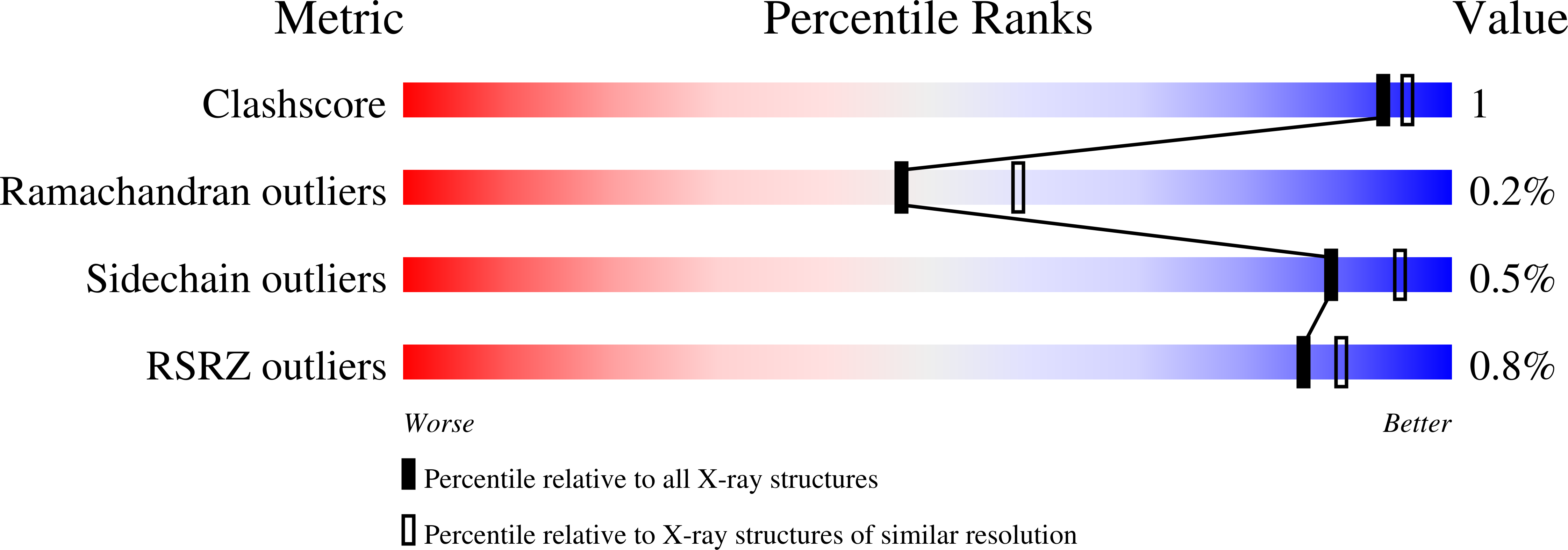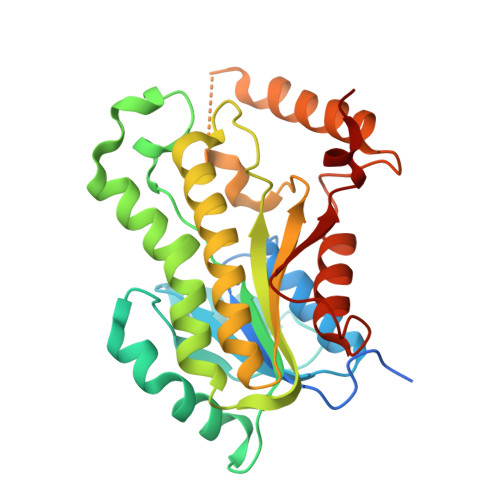A Structural and Energetic Model for the Slow-Onset Inhibition of the Mycobacterium tuberculosis Enoyl-ACP Reductase InhA.
Li, H.J., Lai, C.T., Pan, P., Yu, W., Liu, N., Bommineni, G.R., Garcia-Diaz, M., Simmerling, C., Tonge, P.J.(2014) ACS Chem Biol 9: 986-993
- PubMed: 24527857
- DOI: https://doi.org/10.1021/cb400896g
- Primary Citation of Related Structures:
4OHU, 4OXK, 4OXN, 4OXY, 4OYR - PubMed Abstract:
Slow-onset enzyme inhibitors are of great interest for drug discovery programs since the slow dissociation of the inhibitor from the drug-target complex results in sustained target occupancy leading to improved pharmacodynamics. However, the structural basis for slow-onset inhibition is often not fully understood, hindering the development of structure-kinetic relationships and the rational optimization of drug-target residence time. Previously we demonstrated that slow-onset inhibition of the Mycobacterium tuberculosis enoyl-ACP reductase InhA correlated with motions of a substrate-binding loop (SBL) near the active site. In the present work, X-ray crystallography and molecular dynamics simulations have been used to map the structural and energetic changes of the SBL that occur upon enzyme inhibition. Helix-6 within the SBL adopts an open conformation when the inhibitor structure or binding kinetics is substrate-like. In contrast, slow-onset inhibition results in large-scale local refolding in which helix-6 adopts a closed conformation not normally populated during substrate turnover. The open and closed conformations of helix-6 are hypothesized to represent the EI and EI* states on the two-step induced-fit reaction coordinate for enzyme inhibition. These two states were used as the end points for nudged elastic band molecular dynamics simulations resulting in two-dimensional potential energy profiles that reveal the barrier between EI and EI*, thus rationalizing the binding kinetics observed with different inhibitors. Our findings indicate that the structural basis for slow-onset kinetics can be understood once the structures of both EI and EI* have been identified, thus providing a starting point for the rational control of enzyme-inhibitor binding kinetics.
Organizational Affiliation:
Institute for Chemical Biology and Drug Discovery, ?Laufer Center for Physical and Quantitative Biology and ¡ìDepartment of Chemistry, ¡ÎGraduate Program in Biochemistry and Structural Biology, and ¡ÍDepartment of Pharmacological Sciences, Stony Brook University , Stony Brook, New York 11794, United States.





















